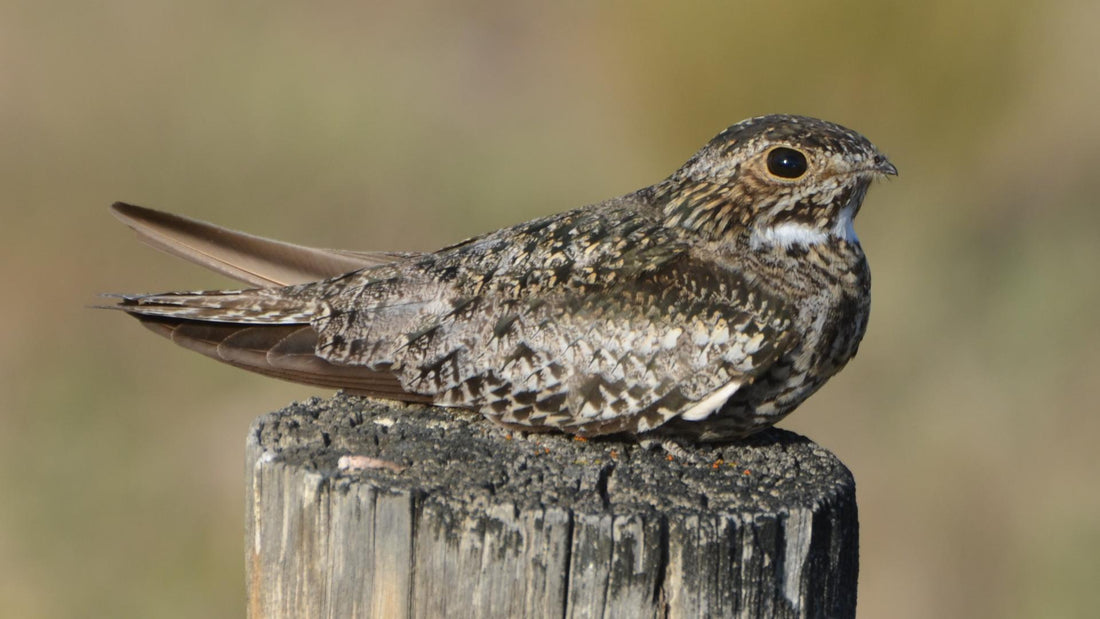
Common Nighthawk
The Common Nighthawk, is a night hunting insect eater that has amazing camouflage allowing it to disappear as soon as it lands. It can be seen on summer evenings hunting in the sky, and their "peent" call is typically the first clue they are above. When flying they can be identified by a white patch close to the bend in their wing. The edge of this patch is also barely visible when they are resting.

Adult in flight picture by Andrew Dreelin through the Macaulay library and All About Birds
These birds can be seen from rural areas throughout urban areas. They hunt at dawn and dusk, catching insects on the wing with its huge mouth.

Mouth picture by Bob Bowhey through the Macaulay library and All About Birds
Their range in the breeding summer months are throughout North America. Not a lot is know about their wintering grounds in South and Central America. They are one of the latest migrants to arrive back in the spring.

Range map courtesy of All About Birds
These birds do not make nests, since their young are also camouflaged. They are found almost throughout the US in their breeding season. Their nesting sites can be out in the open and in urban areas, these birds nest on gravel rooftops. Some urban areas have had success with breeding by adding a gravel pad to their rubberized rooftops.
These birds typically have clutch sizes of two eggs, with 1 to 2 clutches per year. Their incubation period lasts 16-20 days, and the hatchlings are active with down-covered bodies and half-opened eyes upon hatching.

Nighthawk with young image courtesy of Pamela Hunt New York Natural Heritage Program
Their call is typically described as a "peent" similar to an American Woodcock, although later in the season for the Common Nighthawk. They can also create a booming sound from their feathers when they dive down chasing insects.
Video courtesy of Cornell Lab of Ornithology
The Common Nighthawk is considered Least Concern, although their species has been in steep decline. Between the years of 1966 and 2019 the bird declined about 48%, roughly 1% a year. Their decline is estimated to be due to habitat loss, insect loss due to pesticides, and collisions, These birds are also prone to car strikes, since they hunt low to the ground at dusk.
Blog post main photo by Andy Reago & Chrissy McClarren - Common Nighthawk, CC BY 2.0, Wikipedia
Other information from this post was found at All About Birds, eBird and Wikipedia.
